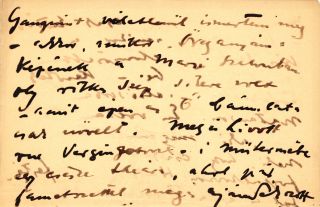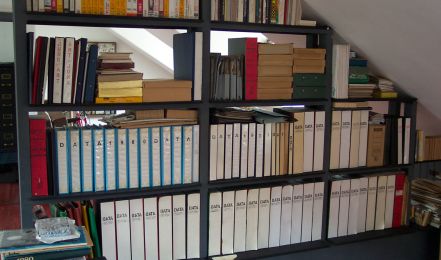‘network’
- « previous
- 1
- 2
- 3
- 4
- next »
Emese Kürti
… She is a member of the Hungarian Section of AICA and of the NEP4Dissent international research network. Her research interests include Hungarian and Yugoslavian neo-avantgarde art (fluxus, conceptual art, experimental poetry and performance, as well as the issues of minority collectives and women’s positions). She received her doctorate in Film Studies from the ELTE Institute for Art Theory and Media Studies; her dissertation was published by L’Harmattan in 2018 ( Glissando and Plucking …
The Correspondence of József Rippl-Rónai
… many examples of the forms and necessity of artistic self-management. He developed an extensive network of contacts abroad – especially in France – and at home. His correspondence faithfully reflects this, with letters addressed to or written by not only the most important representatives of the Hungarian art scene, but also many international figures. To mention just a few examples, Rippl-Rónai had correspondence with Endre Ady, Zsigmond Móricz, fellow painters Károly Ferenczy, János …
Showcasing Selections From the Collection
… allow visitors to experience up close the workings of an “active archive”. PRINT NETWORKS: Edgardo Antonio Vigo and Artists’ Periodicals, 09/10-28/11/2025 Fanzine Anatomy – Alternative Hungarian Publications on Music and Politics from the Artpool Collection, 14/05-19/09/2025 Documents from the first decade of Artpool Art Research Center, 06/03-08/05/2024 Ray Johnson 96 - Nothing, Chance, and Identity, 16/10/2023-13/01/2024 Fluxus@Artpool, …
The Digital "Attic Archive"
… Source Approaches to Artist Archives Curating the Digital Attic Archive, a two-year Research Network Award project funded by the Royal Society of Edinburgh, explores the work and legacy of the Attic Archive within a framework of international collaboration. Part of the Attic Archive, referred to as DATA (Daily Action Time Archive), was launched in 1980 and is now part of the Artpool Collection. Founded in Dundee, Scotland by artist Pete Horobin in 1975, the Attic Archive grew …
Years of Transition: the 1980s in Hungary and Eastern Europe
… movements with various art forms and investigates Hungary’s regional and international artistic networks. Notably, the research team’s participation in the Getty Foundation-funded project Understanding 1989 in East-Central European Art further strengthened the international dimension of the study. Ongoing since 2022, the research has included a conference titled The Flowers of Decay– The Art of Hungary in the 1980s , interviews with key figures from the decade, and an extensive …
- « previous
- 1
- 2
- 3
- 4
- next »




